To Decoy or Not to
Decoy
Decoying ducks, geese, turkeys, and big game has been well
known for years. Refinements in designs and improvements in realism over the
last 10 years or so have taken a turn for the better giving hunters a wide
variety to choose from…along with a wide variety of pricing options.
Discuss This Article
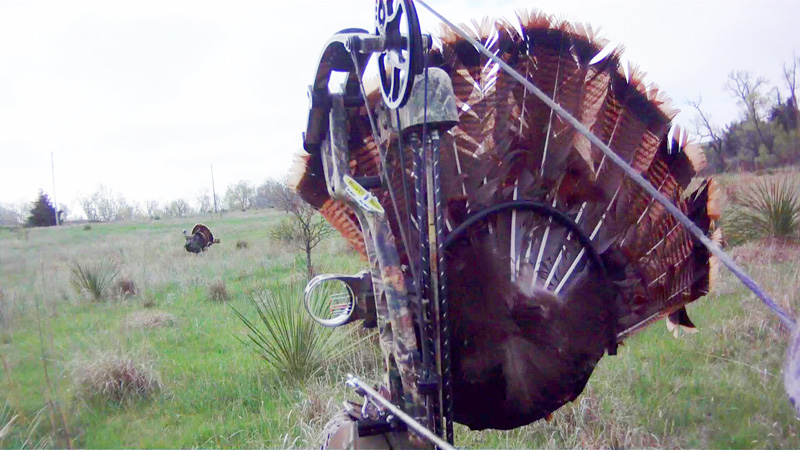
Before I started designing and manufacturing Heads Up Decoys,
I had no desire to use a decoy for the simple fact that I couldn’t find a decoy
that fit my price range and the functionality that I wanted. So if you are
considering purchasing a decoy, a decision needs to be made before you select a
decoy (focusing only on turkey and big game) to address what you are willing to
pay, what functionality you desire, effort you are willing to put forth, and
expectations.
Failure…you need to be willing to accept a certain
amount of failure associated with using decoys. Let’s be honest…it ain’t gonna
work every time. The reactions you will see can range from point blank
encounters where you can’t scare the animal away to spooking at the very site
of the decoy. Tolerance is very important to the overall success of using
decoys…especially with deer and pronghorns. If you set up your decoy and it
doesn’t work “out-of-the-box” and you give up…you will miss out on some great
action and lasting memories along with developing your own techniques that make
the decoy work consistently for you. Don’t give up.
Before purchasing a decoy ask yourself: How do I hunt? How
am I going to use it? How do I want the decoy to perform? How much am I willing
to pay? and When am I going to use it? I always tell people that if you are
hunting over nutritional attractants: small food plot, corn pile, or water…a
decoy is not something I would personally recommend because there is no need,
but I would be happy to sell you one.
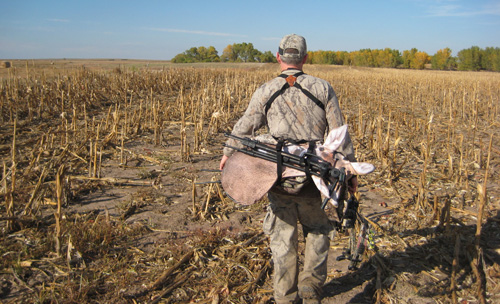
Quick pros and cons of 2D and 3D decoys: With a 3D decoy,
you have to be willing to haul it to and fro, tolerate the bulk, know the fact
they are not always the quietest to maneuver with, stationary, and not very versatile…but
very realistic. With a packable 2D decoy, when hunting stationary you must be
willing to accept the fact that at some point the decoy may disappear on an
approaching animal, the animal may never see it, they are realistic half of the
time, can move erratically in windy conditions, but can be very versatile to
use if you are willing to be versatile or aggressive.
So the take home message with purchasing a decoy is knowing
the fact that they all work, but the purchase should depend on finding one you
can incorporate into your hunting style and committing to it and giving it a
good run. Remember these two statements: 1) No decoy has ever worked from base
camp, buried in the garage, or left in the truck. 2) There will be a time or
has been a time a decoy would have sealed the deal for you on a great animal.
Bowhunting and decoying: I generally like to keep things
simple. I think it is important to keep things simple and then build from
there. Two things I make sure I do when using or operating the decoy are making
sure the animal sees it, and then making sure the decoy moves while the animal
is looking at it. Not every animal we hunt is “vocal” in real life so calling
isn’t always an option, so I do whatever it takes for the animal to see the
decoy. And, for those animals that are vocal in real life, I use calling to
get the attention, challenge, or entice while operating the decoy and letting
the visual effects and movement convince the animal long before bow range that
I am the real deal. Visual contact+movement+calling=dead animals…or close
encounters.

BE SEEN:
There are some main considerations one needs
to do to make decoys work more often. The first and foremost is to set up or
operate your decoy so the animal can see it from a distance. Deer, elk,
pronghorns, and turkeys do not like to be taken by surprise. When I use Heads
Up Decoys…I stop at nothing to make the decoy visible to the animal I want to
attract, even if it means holding the decoy high above my head and running with
it in my hand. No matter how you set your decoys up or how you use your decoys…it
has to be seen to work. I know that sounds obvious, but beyond that, see how
the animals react and fine tune your positioning or method you use the decoy to
get the desired reaction.
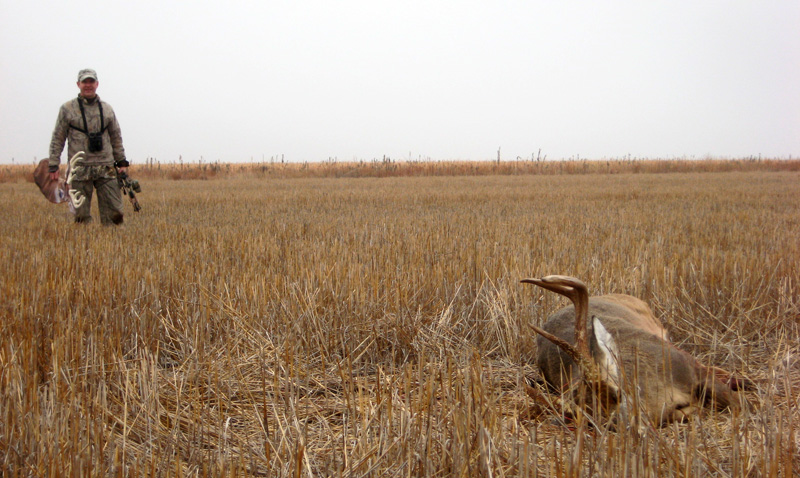
THE SHOW:
The second and equally important aspect of
getting a decoy to work is creating a scene that gives the animal the
impression that your “fake” is real. Calling, rattling, and movement are great
enhancers to your set up. The objective is to convince the animal you are
decoying that this is the real deal long before they enter bow range. If you
chuck a decoy out and expect it to work because it looks real, you are going to
fail the decoy and the potential effectiveness of the decoy. Again, I have
personally found that movement is extremely critical. For example, if you are
raising a ruckus, but nothing is moving, that doesn’t make sense, especially
when the scene of the ruckus can easily be visualized.
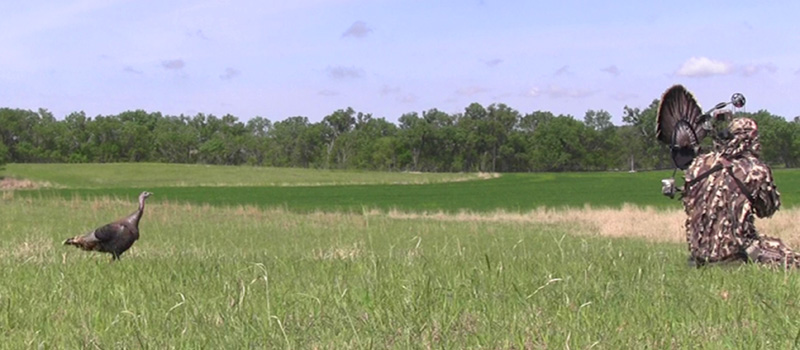
POSITIONING THE DECOY:
Heads Up Decoys, with the
exception of the turkey decoy, are double-sided face-on decoys with no
posterior features so positioning them for stand hunting is interesting…then
throw in the fact they are silhouette and that’s another factor to consider.
For 3D decoys, the general consensus for deer and turkey hunting is to position
the rear of the decoy in the direction you anticipate the animals to be coming
from when they see the decoy. This makes the animal have to loop around to make
eye contact to posture, hopefully at a point blank range. If the animal
approaches from the face on direction you will be in position and not have to
be concerned about them “hanging up” up out of range.
Never ever set
up your decoy out of bow range when hunting from a stationary location…EVER.
Hunting from a stationary position with my Heads Up Decoys,
I generally like to set my decoy up beyond my location where I anticipate the
animal to be approaching to draw the animal to me or focus beyond me. I learned
a hard lesson my first evening out during the 2011 KS archery deer season. I
took my three year old son with me one mild October evening...no expectations
frankly. Had the perfect ground blind set up, but I totally tanked the decoy
positioning. It cost me a nice 140 class buck. I was looking for bigger, but my
son was with me and I would have been happy to arrow him. I knew the direction
the deer would approach with confidence, but I placed the decoy out in front of
me about 15 to 20 yards. The buck came in to 15 yards of the decoy, but no shooting
lanes where available. Remember I have 2D decoys that have “face-on” frontal
images. Had I placed the decoy to our left and back, the decoy would have still
been in full view. With the buck reacting the same, he would have stopped and
postured front and center 15 yards broadside.

SCENTS:
I try to hunt with more sense than scents,
but I do utilize scent attractants from a stationary position. Hunting from the
ground, I obviously work the wind to my advantage nulling out the use of scent
attractants. However, scents are another component to provide a realistic
affect for animals approaching from downwind. In my opinion, applying an
attractant scent like an estrus scent or buck in rut scent directly to the
decoy is like dumping cherry Kool Aid on your cream colored carpeting, it is
there for life. Or, at least until you cut it out and replace it. I am not a
big fan of applying scents to the decoy, obviously. I would suggest applying
the scent on the ground or by a nearby tree or scrub where it can catch some
wind. I think a common mistake we all are guilty of is giving the animal too
much credit. The animal you are going to shoot will not know if the scent is
coming from the decoy or from a nearby scrub or the ground. Put it this way, if
a 180 class whitetail buck approaches your decoy set, I would hope you would
have put an arrow in him before he stuck his nose in the rear of your doe
decoy. Scents are like decoys, they are going to work or they’re not. The
reason I don’t like applying scent to my decoy is because I want to use my
decoy all season long, opening day to the moment I tag out. Most scents are rut
driven and applying scent directly to the decoy is essentially limiting the
time of year that I can use it.
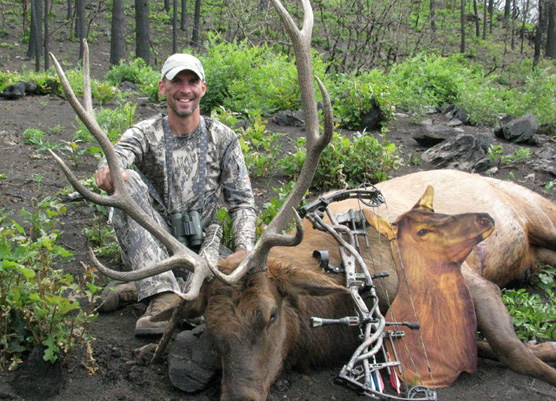
As the owner and designer of Heads Up Decoy, I do not
consider myself an expert at decoying animals. I am still learning and
improving not only my products functionality, but also my ability to place
myself in a situation where the decoy has an opportunity to work. To provide
some insight on why I started Heads Up Decoy, it had to do with building an elk
decoy that I felt fit what elk hunting was all about…fast paced and mobile…and
effective enough to coax a bull to within 40 yards. We’ve incorporated that
philosophy in all our models. So when people ask us how to use them, I say
without embarrassment: “I don’t know.” The reason I say that is because we are
breaking new ground with decoying, every scenario is different requiring its
own unique approach. I am still learning what I can and cannot get away with.
At this point, everything is on the table, so grab your decoy and get out there
and try it. If I would make a suggestion about bowhunting with decoys, do not
let past magazine articles and/or current protocols for hunting deer, elk, and
turkeys keep you from being a versatile hunter and miss out on some truly crazy
moments in the field.
In closing, I think we would probably all agree that we
don’t like to attract every elk, deer, or turkey that comes in visual contact
with the decoy. We generally are after a specific target. Probably the biggest
hang up I have with decoys in general, mine included, is when they are set up
and not in my control…they are seen by every animal that crosses its path,
stationary, and often motionless. Which leads me to my final thoughts about
decoy, bowhunters can take their hunting to new levels of
excitement if one would make the decision to hunt with their decoy verses taking
a decoy hunting. Hunting with your decoy can turn sightings into legitimate
encounters without showing the decoy to every animal on the mountain or the
property. You sometimes cannot be aggressive enough…which really makes it fun. It
can open new opportunities in places you previously would have considered
unhuntable. Lastly, don’t be discouraged if the decoy doesn’t work every time. The
more one hunts with their decoy, the better and more often it will work. Be
Mobile…Stay Mobile.

Smoky Hill Hunting Products, LLC
1710 Golden Belt Dr
Hays, KS 67601
Phone: 785-650-4038
Fax: 785-625-0087
E-mail: [email protected] |
|